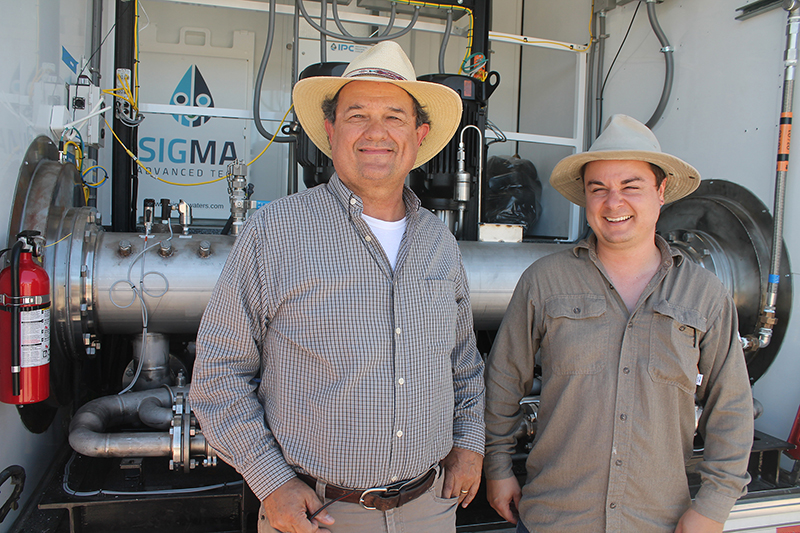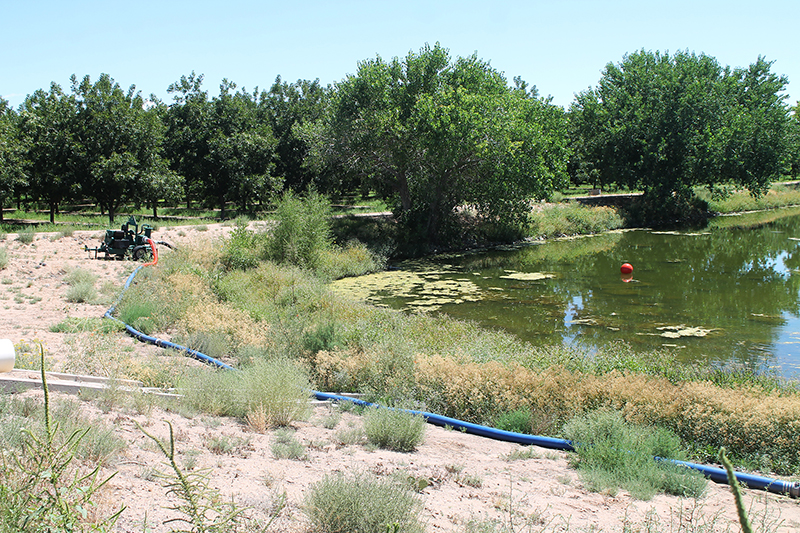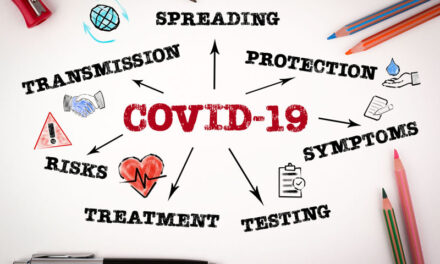BELEN — A New Mexico tech company with Belen roots is using ozone gas that can be created from the air around us to clean water.
Sigma Advanced Technologies, established in 2015, has created a water treatment system using ozone, which can clean a variety of contaminants found in water.
Sigma co-founder and Belen native Bob “Bobby” Sachs and his team recently spent several weeks at Mike Mechenbier’s pecan farm south of Belen field testing the company’s next-generation system on a pond with a significant algae bloom.
While the fish are thrilled with the clean, oxygenated water that was returned to their habitat, the company was focused on collecting data and doing real-world testing of its newest system.
“This is essentially to make sure all the pieces of equipment can talk to each other and ensuring that it’s safe and reliable,” said Greg Remy, Sigma’s head project manager and co-founder.
The pond and surrounding property is what Sachs refers to as his “backyard growing up,” pointing east across Interstate 25 to his childhood home.
“We swam and fished in this lake, hunted back here,” said Sigma CEO Sachs. “It’s a good test area for us to make sure the system is running well before it goes out, while at the same time improving the health of this lake.
“It’s very cool to make the full circle and be here in Belen performing the ‘shake out’ of our next generation system, and we are thankful for the Mechenbier family for allowing us to be here.”

Julia M. Dendinger | News-Bulletin photos
Sigma co-founders Bob “Bobby” Sachs and Greg Remy stand at the intake of their second-generation water cleaning system where ozone is forced into water to clean contaminants.
When the company started eight years ago, the founders — Sachs, Remy and his father, Dr. Roger Remy, Sigma’s CTO — they were looking for ways to use ozone to clean various contaminants and after a UNM Management of Technology study requested by the company, they eventually pivoted to a system that uses ozone to treat water.
Specifically, one that could treat produced water — the water that comes out of an oil or gas well during extraction.
The Sigma system cleans produced water to a point that it can be reused for hydraulic fracturing instead of that water being sent to salt water disposal wells deep underground, never to be seen again and potentially causing earthquakes in some oil and gas producing areas, Sachs said, noting that reuse of produced water significantly reduces the use of fresh water in fracking so the fresh water supply can be preserved for other uses, such as human consumption and farming.
“We are also looking at other uses for produced water. Cleaning it to various stages and seeing if it can be used for things like watering non-food crops,” Greg Remy said.
The system Sigma created is capable of treating up to four million gallons of produced water a day. For the past two years, the company’s unit has been successfully treating hundreds of millions of gallons of produced water in the Permian Basin, while being remotely monitored from the company’s headquarters in the Sandia Science and Technology Park in Albuquerque.
The unit is housed in a large, enclosed trailer about the size of your average tour bus. When deployed onsite, it draws power from either a diesel generator or nearby power line.
Once power is established, it can run unmanned, Sachs said, feeding data into the company’s cloud storage and allowing team members to monitor operations and control the unit remotely.
“The ozone is created on the fly in the trailer you see in front of you,” Remy explained during the unit’s testing period in Belen. “We’re just intaking air around us to make ozone from it. When we treat produced water, we’re creating a clean brine from it, but we see other opportunities for this technology, such as lake management, agri-business and anywhere there’s a large amount of water that needs to be cleaned.”

Sigma, a New Mexico tech company based in Albuquerque, used a local pond in Belen with significant algae bloom to “shake out” its newest system. Company co-founder Bob “Bobby” Sachs is a native to Belen and remembers swimming in the pond as a child.
Wish Krishnamoorthy, PhD, a consultant for Sigma, said he could see many applications for the system, such as water cleanup in areas struck by natural disasters such as hurricanes.
“This unit’s capacity is four million gallons a day. That’s the point. It’s one thing to say, ‘Oh, I can clean water.’ There’s a lot of universities that can do a cup or a small tank,” Krishnamoorthy said. “The scale of this makes it viable for things that actually help communities. You can actually do something with it.”
Sachs said he could see ozone systems being used in smaller municipal water plants such as cities the size of Belen. Albuquerque and other larger cities currently use ozone to treat water on a large scale, he said, but Sigma’s system could enable smaller communities to also use it as it’s main oxidant, which is more effective and leaves no chemical residue in the water.
Remy pointed out that ozone isn’t a “cure all. It’s like a super oxidant. Depending on what your initial water quality was, could it be potable (safe for human consumption)? It depends on what you’re starting with.
“If it’s just organics, ozone will destroy those immediately. If you have some heavy metals, you may need some post process filtration. We are looking into that too because we would like to take it to the next step. We love new technology, so we’re looking at new technologies for different filtrations.”
To that end, Sigma is working with Sandia National Laboratories on a Technology Readiness Initiative project to remediate PFAS-contaminated water.
PFAS — which stands for polyfluoroalkyl substances — are a diverse group of thousands of chemicals used in hundreds of types of products, according to the FDA website. PFAS in the environment can enter the food supply through plants and animals grown, raised or processed in contaminated areas.
Exposure to some types of PFAS have been linked to serious health effects, so the U.S. Food and Drug Association continues to test foods from the general food supply in an attempt to accurately estimate U.S. consumers’ exposure to PFAS from foods.
Because they break down very slowly, PFAS are commonly referred to as “forever chemicals.”
“They use these chemicals on our clothes, pots and pans, they’re everywhere,” said Remy. “In firefighting foam, right? That’s why a lot of military bases are placing emphasis on remediation stemming from their firefighting foam exercises. You wash it off the runway but now it’s gotten into the groundwater.”
Sigma is working with Sandia on a project to incorporate PFAS remediation technology the lab developed with its technology to provide a solution that is better than either on its own, said Sachs.
“Last year, we had a successful proof of concept with Sandia utilizing the (New Mexico Small Business Association) program,” he said.
This resulted in Sigma receiving a $150,000 Technology Readiness Gross Receipts grant, which the Legislature created in 2020, that gives New Mexico companies free access to Sandia expertise to help businesses achieve technology maturation for commercialization opportunities that require improvements on pre existing inventions. That legislation led Los Alamos and Sandia national laboratories to establish the TRGR Technology Readiness Initiative.
“That funding will allow us to continue working with Sandia with the goal of tweaking this existing system to be able to use it to treat PFAS water,” Remy said. “What makes us unique is that while there are solutions out there that will capture the PFAS, but you still have this concentrated toxic PFAS residue. Our goal here is we will destroy it on site at the same time.”
Julia M. Dendinger began working at the VCNB in 2006. She covers Valencia County government, Belen Consolidated Schools and the village of Bosque Farms. She is a member of the Society of Professional Journalists Rio Grande chapter’s board of directors.

















